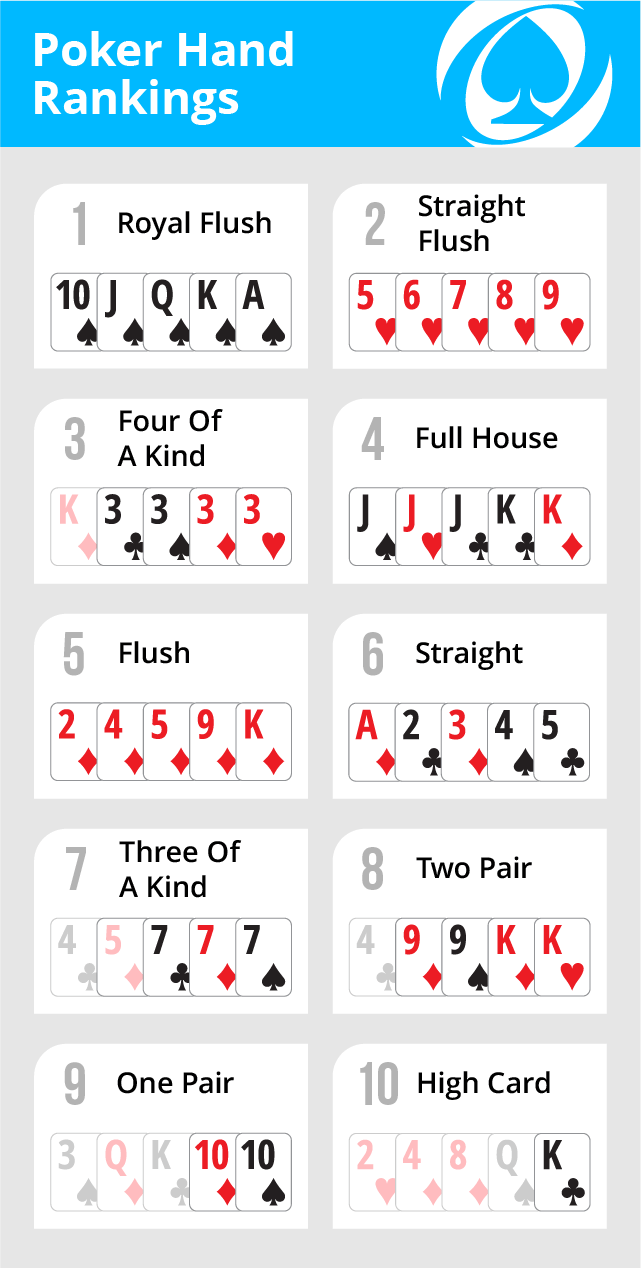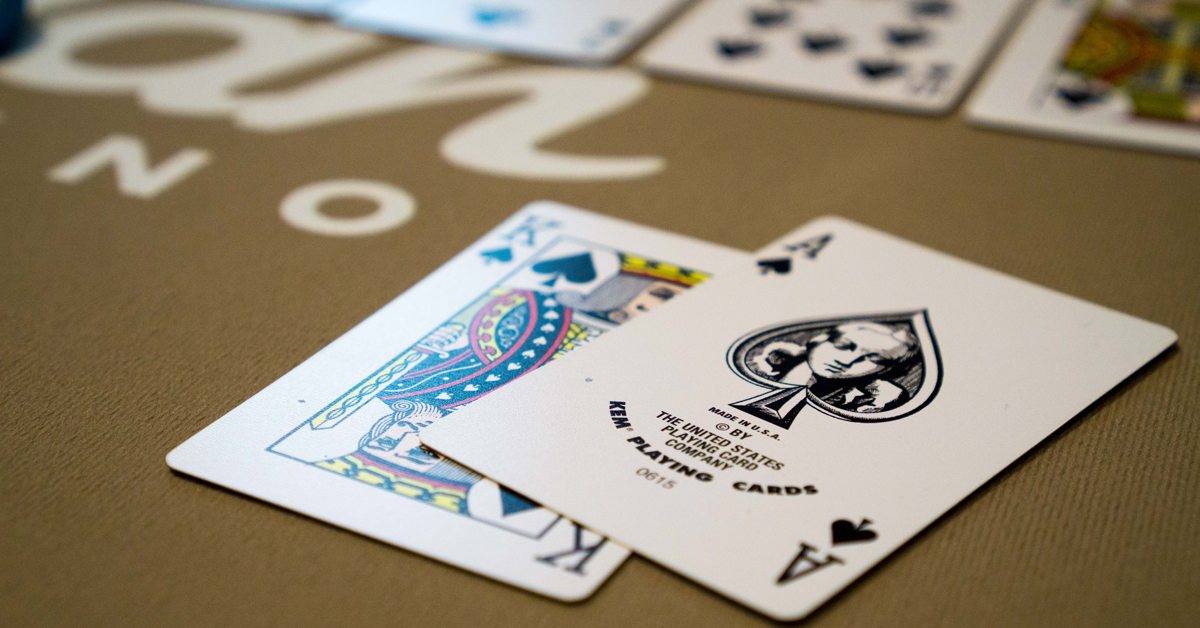Basic Poker Rules Wiki
Poker is a game which people play with a normal set (or deck) of 52 cards. Poker is a gambling game which involves some luck, but also some skill. In poker, players make bets against each other depending on the value of their poker hand. Bets are usually made with plastic or ceramic discs called chips. Bets may also be made with real money, but chips are more often used because they are easier to handle and count. At the end of the game, players either swap their chips for money, or the chips are counted to determine the order of winners.
Blackjack Rules. To beat the dealer by having a higher card total without going over 21. 2 to 10 = Face Value. Each player seeks the best five card poker hand from any combination of the seven cards; the five community cards and their two hole cards. Players have betting options to check, call, raise, or fold. Rounds of betting take place before the flop is dealt and after each subsequent deal. Poker Hands Rankings. Here’s a look at the best possible hands that can be used in standard poker rules, in descending order: Royal Flush: This hand is the rarest in poker. It’s when you make a ten-to-ace straight all in the same suit such as A♦K♦Q♦J♦T♦. Stud poker is any of a number of poker variants in which each player receives a mix of face-down and face-up cards dealt in multiple betting rounds. Stud games are also typically non-positional games, meaning that the player who bets first on each round may change from round to round (it is usually the player whose face-up cards make the best hand for the game being played).
There are many different kinds of poker. In draw poker, each player is dealt five cards. A player can decide to throw away a number of these cards and then take (draw) new cards to replace them.
In stud poker (for example, seven-card stud), some of each player's cards are laid (face-up) on the table so that the other players can see them. In community card poker (for example, Texas hold 'em), players share some of their cards in the center of the table.[1]
History[change change source]
The history of poker is a matter of some debate. The name of the game likely descended from the Frenchpoque, which descended from the Germanpochen ('to knock'), but it is not clear whether the origins of poker itself lie with the games bearing those names. It closely resembles the Persian game of as nas, and may have been taught to French settlers in New Orleans by Persian sailors. It is commonly regarded as sharing ancestry with the Renaissance game of primero and the French brelan. The English game brag (earlier bragg) clearly descended from brelan and incorporated bluffing (though the concept was known in other games by that time). It is quite possible that all of these earlier games influenced the development of poker as it exists now.

English actor Joseph Crowell reported that the game was played in New Orleans in 1829, with a deck of 20 cards, four players betting on which player's hand was the most valuable. [2] Jonathan H. Green's book, An Exposure of the Arts and Miseries of Gambling (G. B. Zieber, Philadelphia, 1843), described the spread of the game from there to the rest of the country by Mississippiriverboats, on which gambling was a common pastime.
Soon after this spread, the full 52-card English deck was used, and the flush was introduced. During the American Civil War, many additions were made, including draw poker, stud poker (the five-card variant), and the straight. Further American developments followed, such as the wild card (around 1875), lowball and split-pot poker (around 1900), and community card poker games (around 1925). Spread of the game to other countries, particularly in Asia, is often attributed to the U.S. military.
The game and jargon of poker have become important parts of American culture and English culture. Such phrases as ace in the hole, beats me, blue chip, call the bluff, cash in, pass the buck, poker face, stack up, up the ante, when the chips are down, wild card, and others are used in everyday conversation even by those unaware of their origins at the poker table.
Modern tournament play became popular in American casinos after the World Series of Poker began in 1970. It was also during that decade that the first serious strategy books appeared, notably The Theory of Poker by David Sklansky (ISBN1880685000), Super System by Doyle Brunson (ISBN1580420818), and The Book of Tells by Mike Caro (ISBN0897461002).
Poker’s popularity has experienced an unprecedented spike in recent years, largely due to the introduction of online poker and the invention of the hole-card camera which finally turned the game into a spectator sport. Viewers can now follow the action and drama of the game, and broadcasts of poker tournaments such as the World Series of Poker and the World Poker Tour have brought in huge audiences for cable and satellite TV distributors.
Game play[change change source]
The game of poker is played in hundreds of variations, but the following overview of game play applies to most of them.
Depending on the game rules, one or more players may be required to place an initial amount of money into the pot before the cards are dealt. These are called forced bets and come in three forms: antes, blinds, and bring-ins.
Like most card games, the dealer shuffles the deck of cards. The deck is then cut, and the appropriate number of cards are dealt face-down to the players. In a casino a 'house' dealer handles the cards for each hand, but a button (any small item used as a marker, also called a buck) is rotated among the players to determine the order of dealing and betting in certain games. In a home game, the right to deal the cards typically rotates among the players clockwise, but a button may still be used.
After the initial deal, the first of what may be several betting rounds begins. Between rounds, the players' hands develop in some way, often by being dealt additional cards or replacing cards previously dealt. During a round of betting, there will always be a current bet amount, which is the total amount of money bet in this round by the player who bet last in this round. To keep better track of this, it is conventional for players to not place their bets directly into the pot (called splashing the pot), but rather place them in front of themselves toward the pot, until the betting round is over. When the round is over, the bets are then gathered into the pot.
After the first betting round is completed (every participating player having called an equal amount), there may be more rounds in which more cards are dealt in various ways, followed by further rounds of betting (into the same central pot). At any time during the first or subsequent betting rounds, if one player makes a bet and all other players fold, the deal ends immediately, the single remaining player is awarded the pot, no cards are shown, no more rounds are dealt, and the next deal begins. This is what makes it possible to bluff.
At the end of the last betting round, if more than one player remains, there is a showdown in which the players reveal their previously hidden cards and evaluate their hands. The player with the best hand according to the poker variant being played wins the pot.
Hands[change change source]
The following are poker hands, from best to worst:
- Straight flush: Five cards of the same suit in sequence (if those five are A, K, Q, J, 10; it is a Royal Flush)
- Four of a kind: Four cards of the same rank and any one other card
- Full house: Three cards of one rank and two of another
- Flush: Five cards of the same suit
- Straight: Five cards in sequence (for example, 4, 5, 6, 7, 8)
- Three of a kind: Three cards of the same rank
- Two pair: Two cards of one rank and two cards of another
- One pair: Two cards of the same rank
- High card: If no one has a pair, the highest card wins
Poker Chips[change change source]
Poker chips are small disks. They made by various materials including molded plastic, colored metal molded clays. They are used in table games as play money. Modern poker traces its roots towards the 1800s, and in those days, players used what you could to help keep a tally. Coins, gold dust and nuggets were used until they considered replacing with something which would indicate them. Thus, the casino chips happen to be introduced within the gambling business.
Poker rooms started using casino chips to simply manage the cash and then collect charges. In those days, casino chips were created of ivory, bone, paper wood. However, the most generally used chips were created of composite clay. One problem made an appearance due to the developing casino chips which was cheating. Some players considered sneaking some chips in their hands. To avoid this, manufacturers created differentiated disks. Consequently, a range of styles was created. With time, other manufacturers could use many other materials for making casino chips, for example, plastic and metal.[3]
Poker variations[change change source]
References[change change source]
- ↑Reuben, Stewart 2001. Starting out in Poker. London: Everyman/Mind Sports. ISBN 1-85744-272-5 Basic teaching text, explains terms, gives advice.
- ↑'poker betting> Poker Betting'. sbo360. Retrieved 2017-06-11.
- ↑'poker-teacher.net > Poker Chips'. poker-teacher.net. Retrieved 2018-08-10.
Basic Poker Rules Wikipedia
Five-card draw (also known as a Cantrell draw) is a pokervariant that is considered the simplest variant of poker, and is the basis for video poker. As a result, it is often the first variant learned by new players. It is commonly played in home games but rarely played in casino and tournament play. The variant is also offered by some online venues, although it is not as popular as other variants such as seven-card stud and Texas hold 'em.
Gameplay[edit]
In casino play the first betting round begins with the player to the left of the big blind, and subsequent rounds begin with the player to the dealer's left. Home games typically use an ante; the first betting round begins with the player to the dealer's left, and the second round begins with the player who opened the first round.
Basic Poker Rules Wikipedia
Play begins with each player being dealt five cards, one at a time, all face down. The remaining deck is placed aside, often protected by placing a chip or other marker on it. Players pick up the cards and hold them in their hands, being careful to keep them concealed from the other players, then a round of betting occurs.
If more than one player remains after the first round, the 'draw' phase begins. Each player specifies how many of their cards they wish to replace and discards them. The deck is retrieved, and each player is dealt in turn from the deck the same number of cards they discarded so that each player again has five cards.
A second 'after the draw' betting round occurs beginning with the player to the dealer's left or else beginning with the player who opened the first round (the latter is common when antes are used instead of blinds). This is followed by a showdown, if more than one player remains, in which the player with the best hand wins the pot.
House rules[edit]
A common 'house rule' in some places is that a player may not replace more than three cards, unless they draw four cards while keeping an ace (or wild card). This rule is useful for low-stakes social games where many players will stay for the draw, and will help avoid depletion of the deck. In more serious games such as those played in casinos it is unnecessary and generally not used. However, a rule used by many casinos is that a player is not allowed to draw five consecutive cards from the deck. In this case, if a player wishes to replace all five of their cards, that player is given four of them in turn, the other players are given their draws, and then the dealer returns to that player to give the fifth replacement card; if no other player draws it is necessary to deal a burn card first.
Another common house rule is that the bottom card of the deck is never given as a replacement, to avoid the possibility of someone who might have seen it during the deal using that information. If the deck is depleted during the draw before all players have received their replacements, the last players can receive cards chosen randomly from among those discarded by previous players. For example, if the last player to draw wants three replacements but there are only two cards remaining in the deck, the dealer gives the player the one top card he can give, then shuffles together the bottom card of the deck, the burn card, and the earlier players' discards (but not the player's own discards), and finally deals two more replacements to the last player.

Sample deal[edit]
Basic Poker Rules Wikipedia
The sample deal is being played by four players as shown to the right with Alice dealing. All four players ante $1. Alice deals five cards to each player and places the deck aside.
Bob opens the betting round by betting $5. Carol folds, David calls, and Alice calls, closing the betting round.
Bob now declares that he wishes to replace three of his cards, so he removes those three cards from his hand and discards them. Alice retrieves the deck, deals a burn card, then deals three cards directly to Bob, who puts them in his hand. David discards one card, and Alice deals one card to him from the deck. Alice now discards three of her own cards, and replaces them with three from the top of the deck (Note: in a player-dealt casino game there is often a rule that the dealer must discard before picking up the deck, but this is a home game so we won't worry about such details).
Now a second betting round begins. Bob checks, David checks, Alice bets $10, Bob folds, David raises $16, and Alice calls, ending the second betting round and going directly into a showdown. David shows a flush, and Alice shows two pair, so David takes the pot.

Stripped deck variant[edit]
Five-card draw is sometimes played with a stripped deck. This variant is commonly known as 'seven-to-ace' or 'ace-to-seven' (abbreviated as A-7 or 7-A). It can be played by up to five players. When four or fewer players play, a normal 32-card deck without jokers, with ranks ranging from ace to seven, is used. With five players, the sixes are added to make a 36-card deck. The deck thus contains only eight or nine different card ranks, compared to 13 in a standard deck. This affects the probabilities of making specific hands, so a flush ranks above a full house and below four of a kind. Many smaller online poker rooms, such as Boss Media, spread the variant, although it is unheard of in land casinos.
Maths of Five-card draw[edit]
- Pre-draw odds of getting each hand
- Royal flush <0.001%
- Straight flush (not including royal flush) <0.002%
- Four of a kind 0.02%
- Full house 0.14%
- Flush (excluding royal flush and straight flush) 0.20%
- Straight (excluding royal flush and straight flush) 0.39%
- Three of a kind 2.11%
- Two pair 4.75%
- One pair 42.30%
- No pair / High card 50.10%